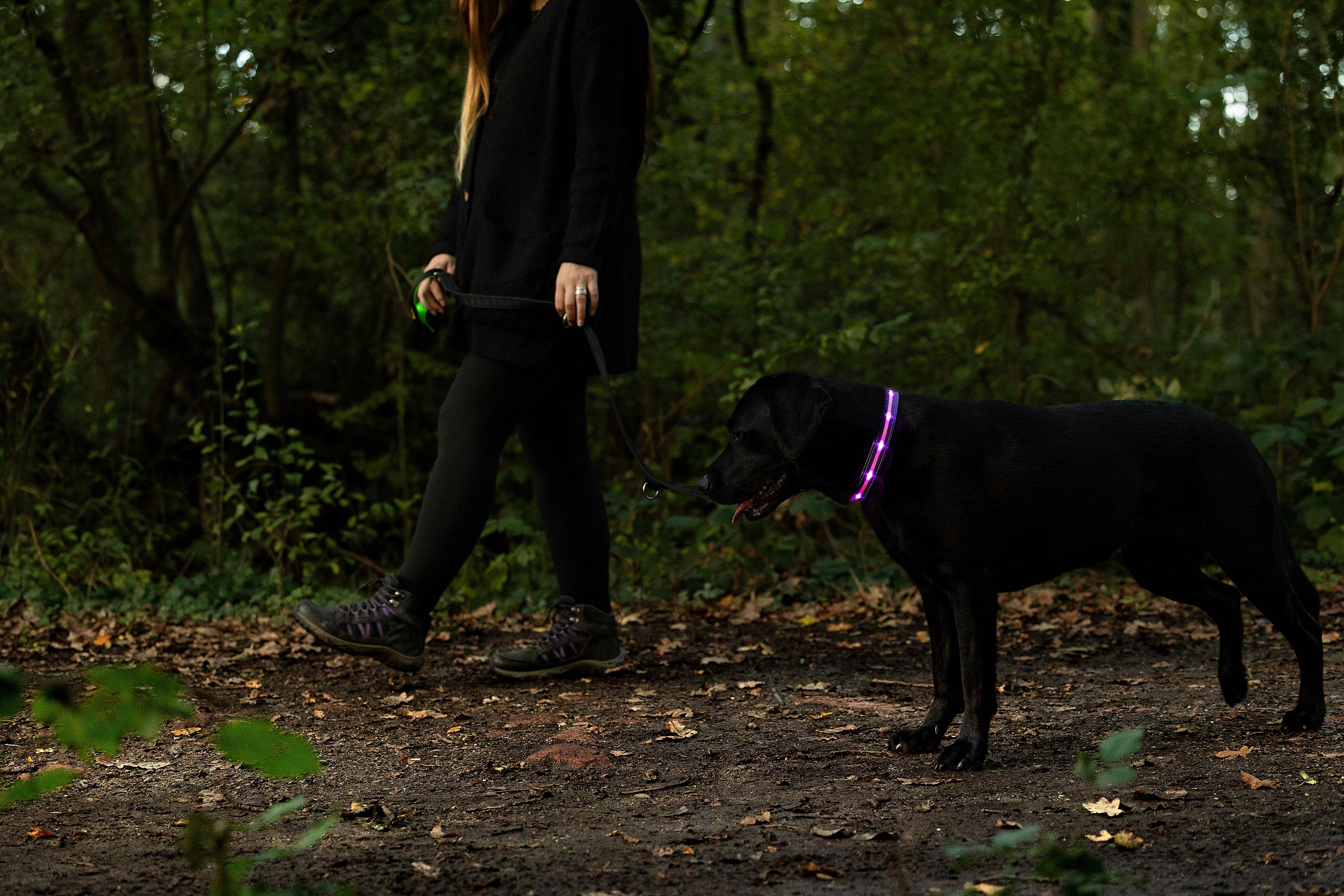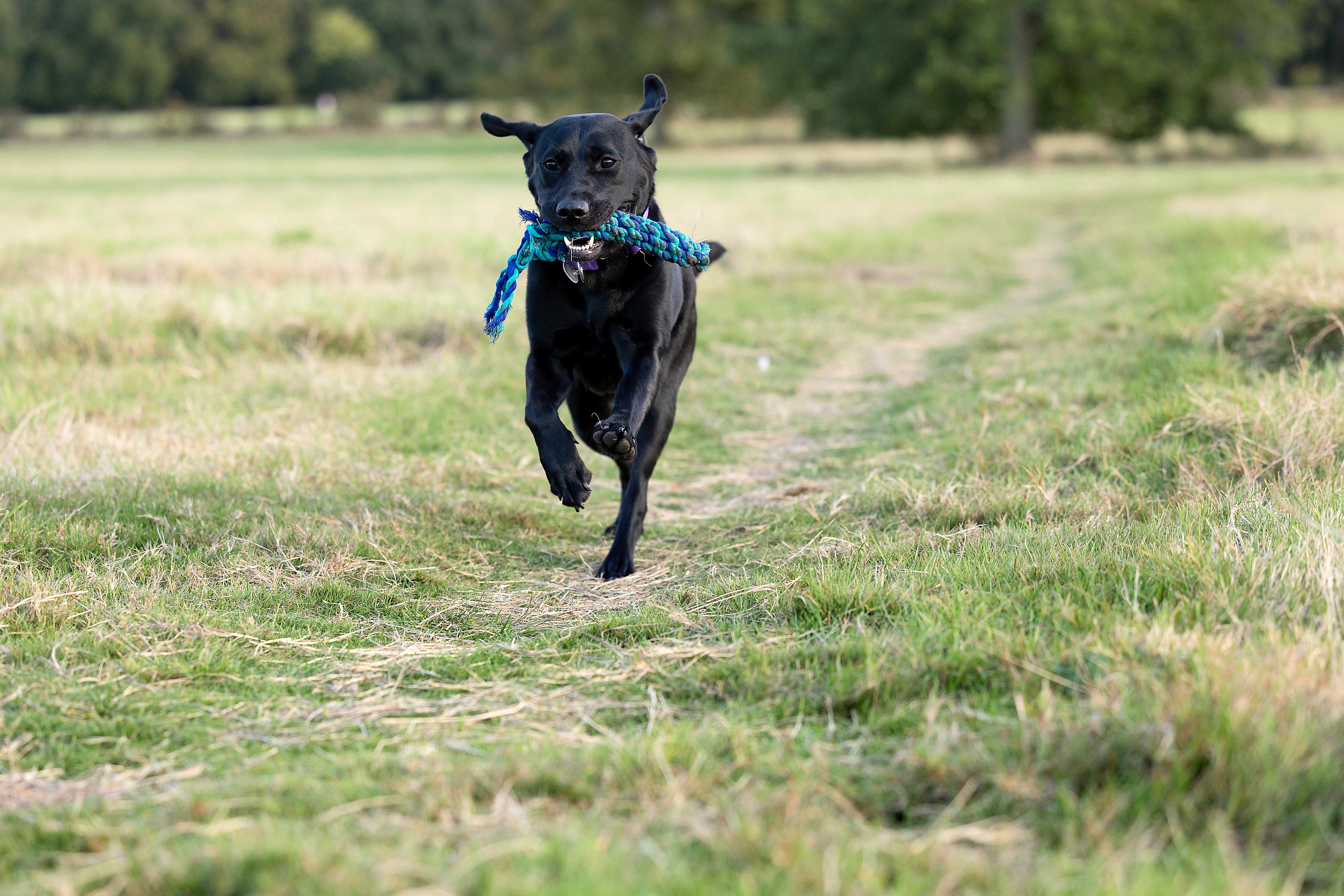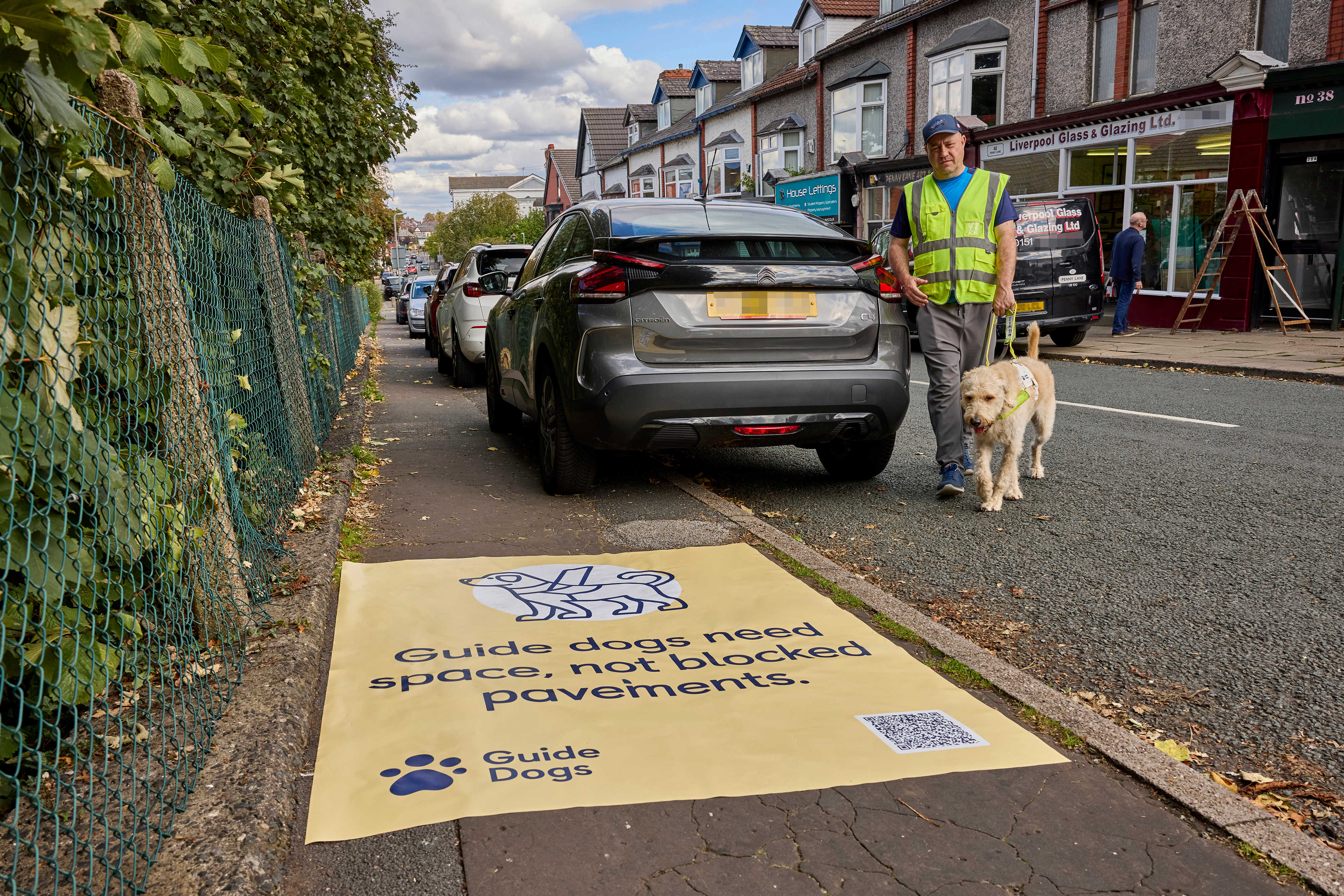Dreams of peaceful morning strolls and woodland rambles are one of the top reasons people get a dog, with almost of half of owners (46%) citing dogs walks as why they originally welcomed a new canine family member. But one quarter of owners dread walks due to their dog’s behaviour.
New research by Guide Dogs suggests that these daily outings are being seen as another chore, with challenging behaviour and poor walker etiquette creating potentially dangerous situations.
Our survey of 2000 dog owners revealed troublesome walking habits included being distracted by their phone (30%), rushing walks in cold or wet weather (54%), and often pulling their dog along if they stop to sniff something (33%). Some 43% of owners said they were likely to walk their dog less in winter, due to restricted daylight hours.

Distracted and novice owners are affecting dog behaviour. Of the owners who let their dogs off-lead, 19% admitted their dog always or often disappears from sight completely. Almost half (49%) of owners who unleashed their pets said their dog was ‘likely’ to chase wildlife too.
What’s more, only three-quarters of owners said they put their dog back on the lead if they spotted another walker with a leashed pet – one of the unwritten rules of good doggy etiquette.
Some admitted their dog often jumped up at strangers (16%) and almost a third (31%) of dogs had even pulled their walker over or into the road. Worryingly, 15% often instigated conflicts with other dogs.

Hannah Wright, Guide Dog Programme Lead at Guide Dogs: “Walks shouldn’t be a source of stress for dogs or owners. They’re an essential part of a dog’s routine and should be enjoyed.
“As the weather gets wetter and days get darker, getting out and about is even less of a priority.
“We need to reframe dog walks from either a trudge around the block or a free-for-all where dogs can run wild without control.
“At Guide Dogs we recommend taking your dog on three different types of walks: a training session to engage your dog outside of the home and practice skills like walking nicely on a lead, a ‘sniffari’, where your dog can smell and meander until their heart’s content, and off-lead fun in a safe environment with toys or suitable playmates.
“If you are struggling with your dog’s behaviour on walks, professional advice can help you safely deal with issues such as reactivity or pulling on the lead.”
Dog walking tips from Guide Dogs
Hannah Wright’s her top tips for peaceful but productive dog walks:
Take your time. Letting dogs stop and sniff provides essential daily stimulation. They learn so much from their surroundings via their nose, and this is an incredible mental workout.
Pay attention. A dog walk may seem like the best time to get stuck into that audiobook or a stream of work emails, but it may mean you’re distracted and unaware of your surroundings.
Remember doggy manners. Your dog shouldn’t charge or bark at other dogs, even if they are being playful. And never allow your dog to approach another on lead, unless the owner says it’s ok and the dogs are respectful and relaxed.
Advocate for your friend. If your dog is getting stressed out by a boisterous playmate, don’t be afraid to ask the owner to step in and get their dog back.
Stick together. If your pet disappears out of sight when off the lead, you don’t know who they could run into – an aggressive dog, a nervous child or even a deer heading for a busy road. Practice recall regularly and keep your dog close if heading around a blind bend.



